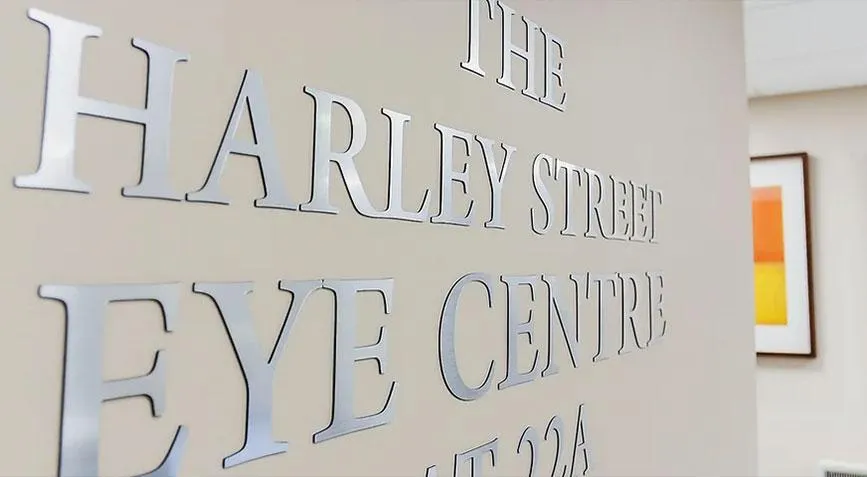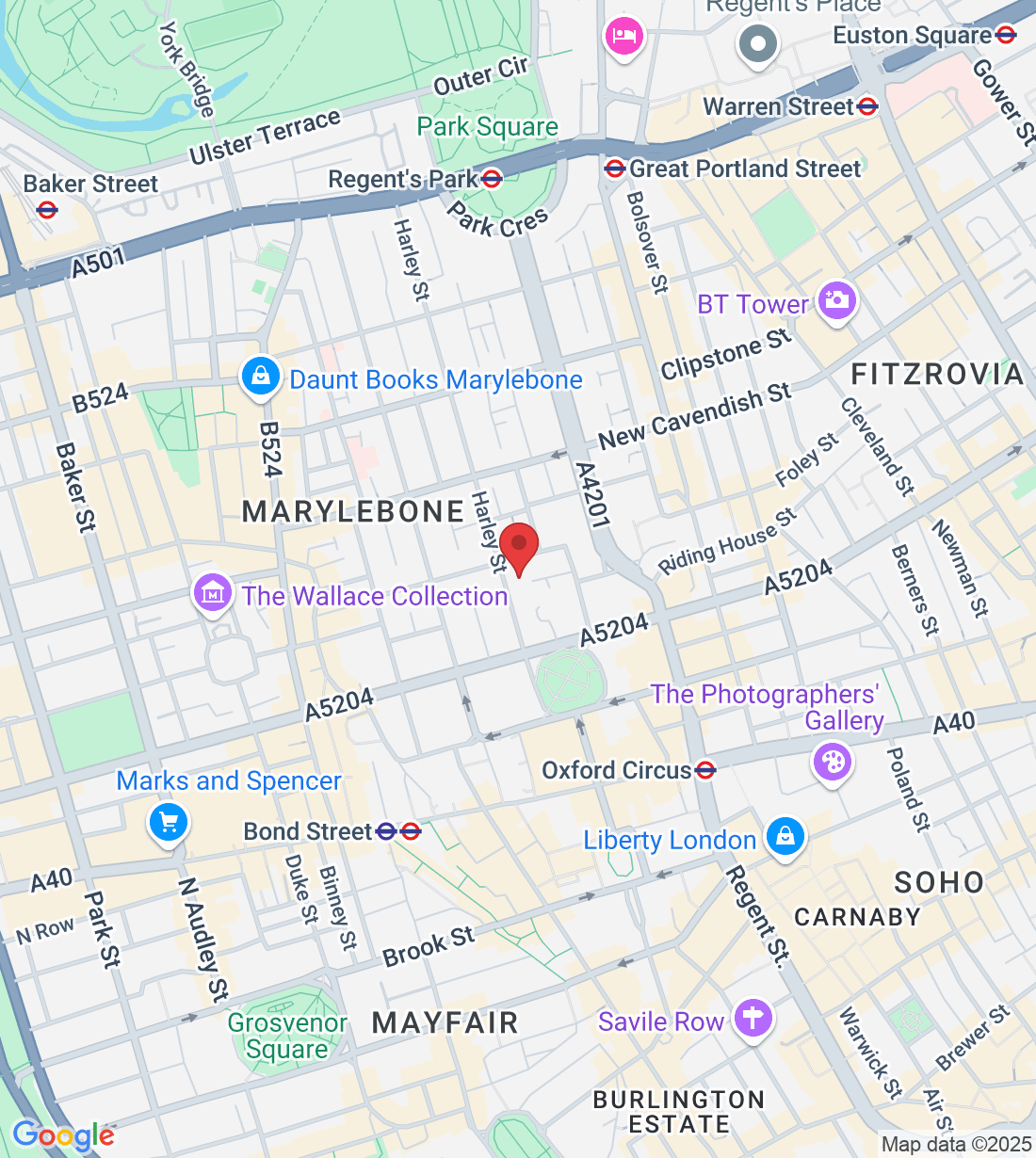
Laser Eye Surgery - Everything You Need to Know
Laser eye surgery - also commonly known as LASIK surgery (laser in-situ keratomileusis), Intra-LASIK, Wavefront LASIK, Epi-LASIK, Epi-LASEK, LASEK or Trans PRK - is a treatment which is used to correct mild to severe eyesight conditions.
This type of vision correction treatment involves corneal reshaping using high tech lasers and surgical instruments to ensure that the light coming into the eye lands on a particular part of the retina.
You too can enjoy a life without the need for glasses or contact lenses. You will have questions and expectations before you choose a laser eye surgeon, and here you will discover everything you need to know about laser eye surgery, as well as: the types of lasers, associated risks, the many benefits, surgical procedures, and essential aftercare.
Laser surgery cost may be higher when compared to numerous other cosmetic and non-cosmetic surgeries, and not everyone is considered as an eligible candidate for vision improving eye surgery.

What Does Laser Eye Surgery Do?
The outer layer of the human eye contains the cornea. However, for some people the cornea undergoes a gradual change in shape. Eventually, these changes may lead to further complications, such as vision impairments, including myopia and astigmatism.
Now, let’s consider a very important question: what does laser eye surgery actually do? Laser eye surgery is a medical treatment that is widely used for reshaping or removing the corneal tissues of the eye.
When light travels through the clear front part of the eye, the light needs to be focused on the retina at the back of the eye. The accuracy of a laser in-situ keratomileusis surgery is primarily based on the state of the vision before the procedure starts.

Treating Complex Vision Impairments
With the aid of laser in-situ keratomileusis eye surgery, one can begin to treat complex vision impairments, primarily related to farsightedness and near-sightedness. As far as the duration of laser in-situ keratomileusis surgery is concerned, the treatment is relatively quick, and the patient is required to stay awake during the treatment. These types of complex laser eye surgery are usually painless.
Keratomileusis laser eye surgery is currently one of the most widely recognised types of refractive eye surgery. While first being patented in 1989, laser in-situ keratomileusis (LASIK), no doubt, offers one of the most effective procedures for treating refractive eye errors & mainly involves the use of a high specification lasers to reshape the cornea.

Best Laser Eye Surgery - 3 Main Procedures
For the purposes of correcting vision related abnormalities, various types of laser eye treatments are currently available. Depending on the condition or need of the patient, an eye surgeon will recommend the most suitable procedure and path going forward to achieve the best possible outcome.
It is always advisable to consult with an eye surgeon or an eye doctor to get a clear idea about which surgical procedure would best suit you and indeed to establish the best route to having laser eye surgery.
1) LASIK - Laser-Supported In-Situ Keratomileusis
LASIK or laser in-situ keratomileusis surgery has undoubtedly become one of the most common types of laser eye corrective surgery. It is also referred to as refractive surgery in medical terms. This type of eye surgery is regarded as safe and effective for the purpose of vision correction.
A computerised laser is used to cut the flap on the cornea and reshape it underneath. This method allows the light coming into the eye to focus more prominently on the retina, and as a result, the requirement to wear corrective lenses or contact lenses is removed. Eye conditions such as farsightedness, near-sightedness and astigmatism are treated during a short eye consultation using this method.

2) HLASIK – LASIK for Hyperopia
HLASIK, also known as LASIK for Hyperopia, is similar to LASIK surgery, however the only difference is that HLASIK is meant specifically for hyperopia, mixed astigmatism, astigmatism with hyperopia, and presbyopia.
In ancient times, the risks and complications associated with vision loss and regression beyond a certain threshold of hyperopia were significant, however in the modern age, new ablation techniques and laser care are used where HLASIK for Hyperopia surgery has become very popular.

3) PRK Laser Eye Surgery
PRK (photorefractive keratectomy) was the first laser refractive method introduced in the 1990’s and LASIK was introduced and approved just a few years later. PRK is an effective treatment for hyperopia (long sighted), myopia (short sighted) and astigmatism.
Astigmatism can last a few years, or it can be a lifelong problem (The eye is shaped more like a rugby ball and incoming light is centred on 2 or more places within the eye).
PRK laser eye surgery changes the shape of the cornea and by doing so, will correct refractive vision errors. The cornea should normally bend light towards the retina centre, but problems with eyesight can arise because the light is bent away from the centre of the retina.

Someone may be a good candidate for LASIK, but not so for PRK and much depends on each person’s eye health and individual circumstances. But which procedure came first - PRK or LASIK? Is one more effective than the other?
Today’s version of LASIK and PRK come with much improved technology and customised wavefront. Today’s treatments are more advanced compared to when LASIK and PRK was first introduced many years ago.
Flap (LASIK) or No Flap (PRK) ?
With PRK no flap is created on the surface of the eye, but with LASIK, a very thin flap is (with femtosecond laser keratome or automated mechanical microkeratome).
It’s not the flap that corrects the vision, the laser itself is used for cornea reshaping. Then final step is to close the flap over the area which has been lasered. Using the best high-quality Wavefront laser will ensure the best possible outcome. In the case of PRK where there is no flap, the laser reshaping is carried out as normal and recovery time is slower to allow for additional healing.
PRK v LASIK
· Recovery time for PRK surgery is longer compared to LASIK surgery.
· The medical and surgical methods used are generally similar.
· LASIK surgery involves the lifting of the corneal tissue and in the case of PRK surgery, portion of the cornea is removed and discarded.
So, computerised advanced laser technology is utilized for the purpose of eliminating microscopic amounts of the corneal tissue and reshaping it to improve vision.

If You Have Had LASIK Before
If a patient has previously undergone LASIK eye surgery, then Epi-Bowman's Keratectomy (EBK) or PRK would be considered. So, essentially EBK or PRK would be recommended if the cornea is thinner or if a larger portion of the eye is required wo be worked on due to the current refractive levels.
Why would you have HPRK Eye Surgery?
HPRK is like PRK eye surgery, just as HLASIK is similar to LASIK eye surgery but everything is dependent on patient requirements. This type of laser eye surgery is normally recommended by eye doctors for those who have mixed astigmatism, astigmatism with hyperopia or hyperopia.
HPRK is carried out only when the risks, complications and outcomes of other laser surgery types are weighed up. Patient safety is always at the core of every medical decision.
So, in a situation when the previously conducted HLASIK or LASIK surgery has led to acquired hyperopia, one might consider undergoing an HPRK surgery. You can learn more about which surgical procedure would suit you best, by requesting an appointment with an eyecare professional.
When to Use Each of These Laser Eye Surgical Procedures?
Each laser eye procedure will be applied to an individual’s set of circumstances and not everyone will have the same type of surgery. Reasons can range from simple to more complex:
· PRK surgery is normally recommended for near-sighted issues.
· HPRK can be recommended especially if someone is going through mixed astigmatism, hyperopia, or astigmatism with hyperopia.
· LASIK surgery may be considered if you experience near-sightedness, astigmatism, or farsightedness.
· HLASIK will treat hyperopia, mixed astigmatism, astigmatism with hyperopia, and presbyopia, in some cases.

Are You a Suitable Candidate for Laser Eye Surgery?
Nowadays, a significant number of people use corrective eyewear such as contact lenses and glasses to see more clearly. When the eye fails to refract or bend the light rays correctly aids to assist eyesight are an essential requirement.
Below you will find common eye diseases for which people tend to undergo laser eye surgery (including LASIK):
Near-Sightedness
Near-sightedness, also known as myopia or short-sightedness, occurs when a person can see objects placed within a short distance, but they find it challenging to see objects which are far away and so appear to be blurred. Steep misshaping of the cornea is a factor.
The good news is that this condition is treatable, by reshaping the cornea appropriately.
Farsightedness
Being Farsighted - also known as hyperopia – means living with an eye condition where it is difficult to see objects which are closer to the eye. However, seeing objects which are far away is easier.
Farsightedness very often, occurs when the curvature of the cornea becomes excessively flat. The good news is this can be treated through laser in-situ keratomileusis surgery so the cornea can be reshaped to create a steeper corneal curve.
Astigmatism
If you have astigmatism, you will have eyes which are not shaped as they should be. Eyes should be round, but yours will be shaped more like a rugby ball.
When the irregular shape of the cornea is addressed through laser eye surgery, astigmatism issues are corrected very quickly.

When You Shouldn’t Have Laser Eye Surgery
Not everyone will be a suitable candidate for laser eye surgery - that’s the reality. Here are some important points and questions to take into consideration when deciding if you are an ideal candidate for vision correction surgery:
· If your eye prescription has changed within the past 12 months.
· Do you take medications which affect your vision?
· If your cornea is too thin it may not be stable enough during or after surgery.
· Laser eye surgery should be avoided by women who are pregnant.
· Research suggests you should not have laser eye surgery if you are under the age of 18 or in your early 20s.
The Harley Street Eye Centre
Laser Eye Surgery London
Benefits of Having Laser Eye Surgery Including LASIK
The obvious benefit is that there will no longer be a reliance on wearing glasses or contact lenses. Here are some more:
· No need to buy glasses or contact lenses (no monthly subscriptions)
· Improved lifestyle eg being able to see without glasses during swimming
· Being able to take part in sports and activities without having glasses or contact lenses get in the way
· Cosmetically you may think that not wearing glasses will improve your own aesthetic appearance. It’s a personal decision - some people just don’t enjoy wearing glasses
Expectations Before, During, and After Laser Eye Surgery
What should you expect before, during or after laser eye surgery? It’s difficult to fully understand if you haven’t had a full laser eye surgery consultation with a specialist. But one concern you might have is if you think it’s worth the expense.
Vision Correction Surgery - Before Treatment
Before going ahead with treatment many factors must be taken into consideration. Careful self-evaluation should play an important part in this process as well as an actual consultation with a laser eye specialist.
· Be honest about your medical history
· Drink water regularly: dry eyes can occur
· Inform if you take eye drops for any allergies or dry eye conditions
· Limit use of contact lenses so corneal measurements and laser calculations can be as accurate as possible prior to surgery. Contact lenses can alter the shape of the cornea. Ideally wear glasses for a few weeks at this point.
· Avoid wearing perfume, makeup, or aftershave
· You will be awake for surgery (sedative medication is given)
Do You Wear Contact Lenses Regularly?
During the evaluation process, your eye surgeon will ask about your past medical and surgical history. An examination of your eyes will be required so your vision can be assessed to see if you can be considered for laser eye surgery.
Your medical history could include past or current conditions such as:
· Eye infections
· Inflammation,
· Enlarged pupils
· Elevated eye pressures
· Dry eye syndrome / issues

Assessing the Cornea Before Laser Eye Surgery Goes Ahead
With the use of advanced wavefront-guided technological equipment, your eye surgeon will also want to measure your eye's cornea to assess its shape, thickness, contour and to also check for any irregularities. Your eye doctor can make thorough corneal checks to ascertain exactly where any reshaping or removal of unwanted tissue might be required.
Scanners can be used to create high-performance charts and topographic maps for the eye. Your eye specialist should discuss everything with you at every stage of the process.
Laser Eye Surgery - During Treatment
During the entire surgical procedure, the patient is asked to concentrate on a pre-determined point of light. Staring at the light enables fixing of the eyes on just one position whilst the cornea is expertly reshaped.
Surgery requires 30 minutes maximum duration. The patient will be required to lie back in a reclining chair. Numbing drops will be applied to the eyes then an instrument is placed in the eye area to make sure the eye cannot close during the laser stage of surgery to keep the eyelids open.
Applying Numbing Eye Drops
After the eye drops are applied, a suction ring is placed onto the eye before the corneal flap is cut. Vision at this point may appear dimmer and the suction ring may cause a feeling of pressure. For the cutting of the flap a laser or clinical blade may be used to create a small-hinged flap from the frontal portion of the eye. Once the flap is folded back the doctor will have access to the area of the cornea to be targeted, and the lasering stage of surgery will be carried out.

Removing Corneal Tissue During Surgery
As the laser beam pulses a small amount of the corneal tissue is removed / reshaped. After the surgeon has finished reshaping, the flap is carefully and precisely laid back into place.
As the laser pulses, tissue is removed, and an odour like that of burning hair may be detected.
Laser Eye Surgery Aftercare
In the first day or two after corrective eye surgery is completed, you may experience some discomfort and any side effects will usually pass over a period-of-time. Side effects are usually temporary and include:
Some patients have discomfort in the first day or two after LASIK eye surgery. Other side effects are rare and usually go away over time. These include:
· Itchy scratchy eyes
· Small bruises around the eyes
· Sensitivity to light
· Halos around images
· Eyesight that fluctuates
· Gritty eyes
· Dry eyes
· A watery or burning sensation
· Glare
· Blurred vision
After surgery, painkillers and eyedrops will be prescribed as these will limit any unnecessary discomfort and help with healing. You may also be advised to wear shields over the eyes in the evening until the end of the healing process.
No stitching to the flap is required and although you will see an improvement in your eyesight after surgery, it will take 3 to 4 months for everything to heal and for the eye to fully settle down.
Follow Up Appointments
Aftercare can differ from clinic to clinic, and you may be expected to attend a follow up consultation one or two days after surgery. Your eye doctor will check the overall health of the eye and will make sure the healing process is going as it should. Follow up appointments beyond this can be weekly or monthly depending on the progress being made.
Things to avoid during aftercare
This applies to the aftercare period:
· Avoid dusty and smoky environments
· Refrain from using cosmetic products
· Don’t take part in physical activities such as swimming, hot tubs, and strenuous contact sports
· Follow all medical advice given by your eye doctor
· Always be mindful and safe and keep your eyes out of the way of potential harm and risks
· Don’t rub your eyes
Laser Eye Surgery is Effective and Safe
Cost of corrective eye surgery is not usually covered by health insurance companies.
The eyes usually heal quickly after laser treatment, and improvements will be noticed within the first few days. Your doctor will be available to help you if you experience any unusual or rare side effects.
It is important to note that your vision may still change after Laser Eye Surgery. Your expectancy is that having just one session of laser eye surgery will be enough, and this is usually the case for many patients. However, a small minority in older age, might need to use glasses just for reading.
Also, it may be necessary to restore the effects of your laser eye surgery, on average a small percentage of people may need a second procedure at some point in the future.
LASER EYE SURGERY HARLEY STREET
Generally, you can expect results between 20/20 and 20/40 after having Laser Eye Surgery. As laser technology improves, this will only reflect positively on outcomes and long-term results for patients whose desire is to have laser eye surgery.
THE HARLEY STREET EYE CENTRE
IS HERE TO HELP YOU
If you need help taking your first steps, speak with us. We have achieved an excellent reputation and much recognition, as well as excellent reviews over the years in the UK and internationally.
Learn more about us and the services that we provide by clicking here. You can contact us via our contact page, by telephone London 0203 968 2030 and by using our online chat service where one of our doctors will chat with you. Book a Laser Eye Consultation at our Harley Street clinic today.
How to Get to The Harley Street Eye Centre
The Harley Street Eye Centre is located in Marylebone, Harley Street in London UK.
From Charing Cross to Harley Street W1G 9BP Directions to 22A Harley Street, London W1G 9BP. Harley Street is a well known street in Marylebone in Central London. Harley Street is 1 mile from Charing Cross via the Underground and is under 2 miles away via car travel.
Train Services to Harley Street W1G 9BP
Directions to 22A Harley Street, London W1G 9BP. Oxford Circus station is the nearest train station to Harley Street in Marylebone. Oxford Circus Station is in Zone 1 of the London Underground.
Harley Street is in the Centre of London so you will find a large choice of quality places to dine out.
Bus Service and Car Access to Harley Street W1G 9BP
The 453 bus service is widely available from London via Portland Place. The Harley Street Eye Centre is a 1 minute to 2 minute walk from Portland Place.
Further London bus, tube and train travel options can be searched for here.
The Harley Street Eye Centre – for City of London, City of Westminster and all London boroughs. Inner London and Greater London.
Inner London: Lambeth, Southwark, Tower Hamlets, Hackney, Islington, Camden, Westminster, Kensington and Chelsea, City of London, Hammersmith and Fulham and Wandsworth
Outer London: Bromley, Lewisham, Greenwich, Bexley, Havering. Lewisham, Barking and Dagenham, Redbridge, Newham, Waltham Forest, Haringey, Enfield, Barnet, Harrow and Hillingdon. Also, Brent, Ealing, Hounslow, Richmond Upon Thames. Kingston upon Thames, Merton, Sutton and Croydon.
You can book a Same Day Laser Eye Consultation at our Laser Eye Surgery Clinic in London - Contact us to learn more.
Ask And His Team
Fill in the form to request a Call From Our Team
One of our team will call you for FREE and answer any questions or concerns you may have about your eye health
© Copyright 2023. The Harley Street Eye Centre. All rights reserved.





